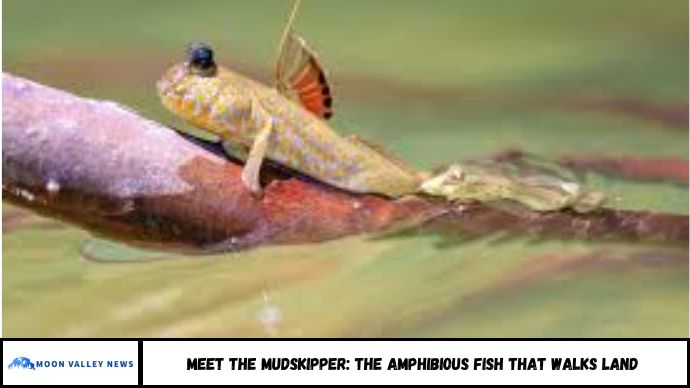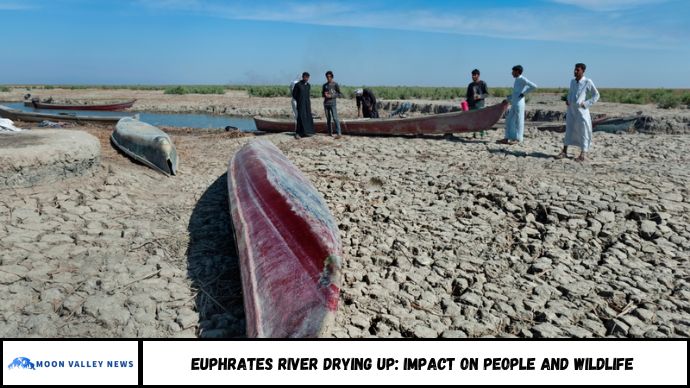The mudskipper is a remarkable fish that can walk on land, breathe air, and survive in harsh, fluctuating environments. This amphibious marvel has adapted in unique ways that challenge everything we thought we knew about fish. In this article, you’ll learn how mudskippers move on land, how they breathe, and what makes them an evolutionary success story in both aquatic and terrestrial habitats.
Are there fish that can walk on land? Surprisingly, yes—and one in particular, the mudskipper, stands out as the most extreme example of amphibious adaptation.
While the phrase “a fish out of water” usually implies trouble, some fish have evolved to survive—and even thrive—on land. These amphibious fish live partially in water and partially on land, much like frogs. And among them, the mudskipper leads the way in redefining what it means to be a fish.
Consider the lungfish, an ancient species dating back nearly 400 million years. True to its name, it has functioning lungs and must surface to breathe—ironically, it can drown if it stays submerged too long. Then there’s the eel catfish, which can wriggle out of swampy waters to hunt insects on land. Even grunions, small silvery fish found off California’s coast, briefly come ashore to lay their eggs in sandy beaches during spawning season.
Yet among all these semi-terrestrial swimmers, the mudskipper stands out as the most land-adapted of all. With its ability to walk, climb, breathe air, and build burrows, it has mastered the amphibious lifestyle in ways few other fish can match—offering scientists rare insights into the evolutionary leap from water to land.
Can a Fish Walk on Land? Meet the Mudskipper
Imagine a fish that doesn’t just flop on land but walks, breathes air, and climbs trees. It might sound like science fiction—but for the mudskipper, it’s everyday life.
Mudskippers, belonging to the family Gobiidae, defy the typical definition of a fish. Found in mangrove swamps and mudflats across Africa, Asia, and Australia, these small amphibious fish have evolved extraordinary traits to survive both in water and on land.
Where Do Mudskippers Live?
Mudskippers thrive in intertidal zones—coastal areas that are underwater at high tide and exposed at low tide.
Key habitats include:
- Mudflats and mangroves in Southeast Asia, Africa, and northern Australia
- Brackish water environments with high oxygen variability
- Regions with fluctuating water levels, requiring constant adaptation
These harsh environments have driven mudskippers to evolve amphibious capabilities that give them a survival advantage over fully aquatic species.
How Do Mudskippers Walk on Land?
Unlike most fish, mudskippers don’t simply wriggle on land—they use their pectoral fins like legs.
Their movement involves:
- “Crutching” forward by alternating fin pressure
- Lifting their head and chest off the ground
- Leaping up to 2 feet in a single bound to escape predators or search for food
Their muscle structure and joint flexibility give them greater mobility than other fish, making them one of the few vertebrates to evolve functional movement on land without legs.
How Do Mudskippers Breathe Out of Water?
One of their most fascinating features is their ability to breathe air through:
1. Cutaneous respiration
They absorb oxygen through moist skin and mouth linings, much like amphibians.
2. Modified gill chambers
Mudskippers trap water in their gill chambers to keep the gills moist, allowing for oxygen exchange on land.
3. Burrow behavior
During low tides, they hide in burrows where oxygen levels remain stable, providing a safe refuge from heat and predators.
Why Did Mudskippers Evolve to Walk on Land?
Mudskippers didn’t evolve these traits by chance—environmental pressures drove the change.
Evolutionary advantages:
- Avoiding aquatic predators during low tide
- Feeding on land-based prey like insects and worms
- Establishing burrows for protection and breeding
- Accessing oxygen-rich environments when water becomes stagnant
These adaptations make the mudskipper a living model for understanding how early vertebrates may have transitioned from water to land millions of years ago.
Fascinating Mudskipper Facts & Data
- Species count: Over 40 species worldwide
- Land time: Up to 90% of the day
- Jump length: Up to 2 feet using fins
- Breathing method: Combination of gills and skin
- Distribution: West Africa, India, Southeast Asia, Northern Australia
Their unique physiology and behavior have made them a favorite subject for evolutionary biology and environmental science.
FAQs
1. Can mudskippers really walk on land?
Yes. They use their pectoral fins to crawl, climb, and even jump across mudflats.
2. Do mudskippers breathe air?
Yes. They breathe through their skin and by retaining water in their gill chambers.
3. Where can you find mudskippers?
They live in tropical intertidal zones across Asia, Africa, and Australia.
4. How long can mudskippers stay out of water?
Some species can remain on land for hours at a time, depending on humidity.
5. What do mudskippers eat?
They feed on insects, crustaceans, worms, and algae found on mud and in shallow water.
6. Are mudskippers endangered?
Not currently, but their habitats are threatened by coastal development and pollution.
Conclusion
The mudskipper is more than just a biological curiosity—it’s a living link between aquatic and terrestrial life. With their ability to walk on land, breathe air, and thrive in challenging environments, mudskippers push the boundaries of what we define as a fish.
They offer scientists a unique opportunity to study evolution in action, showing how life adapts to the most extreme environments. Whether you’re a student of biology or simply fascinated by nature, the mudskipper is proof that the natural world is full of surprises.







